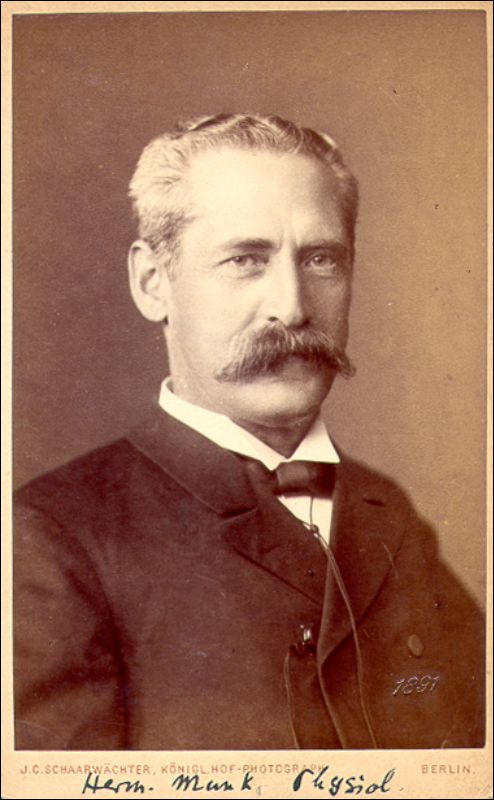Hermann Munk
Area:
cortical localization
Website:
http://de.wikipedia.org/wiki/Hermann_MunkGoogle:
"Hermann Munk"Bio:
(1839 - 1912)
http://www.deutsche-biographie.de/pnd117185930.html
http://www.bri.ucla.edu/nha/ishn/abs-ishn2008.pdf
Hermann Munk: a nineteenth-century academic career in Prussia
Christian BAUMANN
Justus-Liebig-University Giessen, Germany
Hermann Munk (1839-1912) was a pioneer in the field of cortical localization, and the significance of his discoveries is well documented in the literature(Schiller, 1970; Finger, 1994).
The present paper concentrates on Munk’s Curriculum vitae and on the conditions under which his scientific work evolved. Munk was born as the son of a Jewish merchant and was educated in Gymnasien, elite high schools, in Berlin and Posen the latter being the capital of a Prussian province at the time. He studied medicine from 1855 to 1859 mainly in Berlin where the physiologist Emil du Bois-Reymond (1818-1896) became his mentor. Munk worked on electrophysiological problems in du Bois-Reymond’s laboratory for several years until, in 1876, he was appointed Chairman of the Physiology Department at the Royal Veterinary School in Berlin. Here, he then was in the position to establish his own field of research, i.e., the physiology of the cerebral cortex as revealed by lesion experiments on dogs and monkeys (and occasionally on horses). His results so convinced his former teacher du Bois-Reymond that he proposed Munkfor full membership in the Royal Prussian Academy of Sciences, and Munk was in fact elected in February 1880.
Munk also was Associate Professor at the Berlin University and promoted medical students who worked in his laboratory for their theses. Most of these students were clinically oriented and some became esteemed neurologists like Max Lewandowsky (1876-1918) and Max Rothmann (1868-1915).
References:
Francis Schiller: Hermann Munk (1839-1912) pp. 247-250 in The Founders of Neurology, 2 nd edition, Springfield, 1970.
Stanley Finger: Origins of Neuroscience, Part I, 6. Post-Renaissance Visual Anatomy and Physiology, pp. 76-95, Oxford University Press, 1994.
(Show less)
